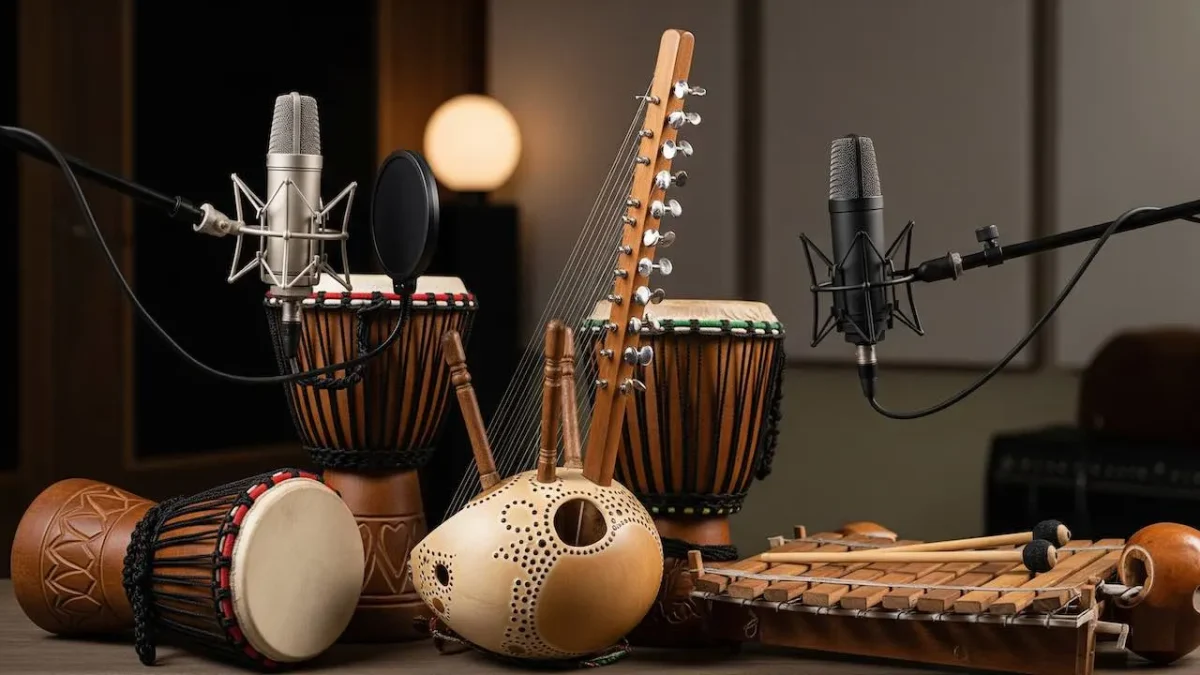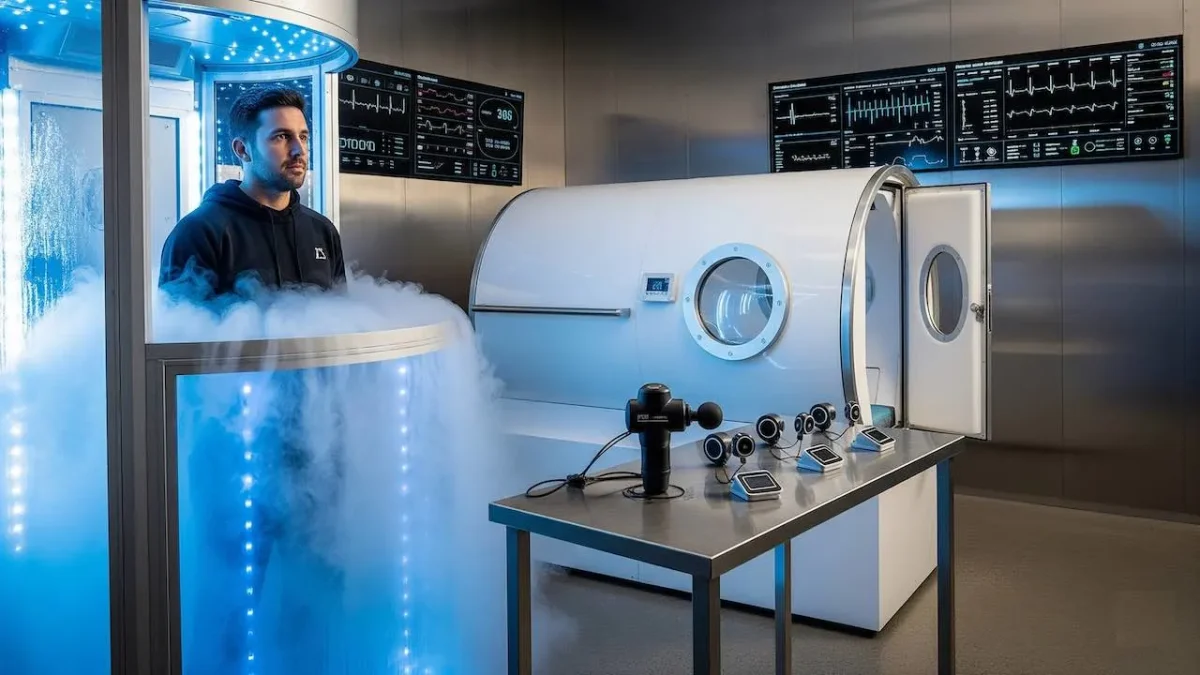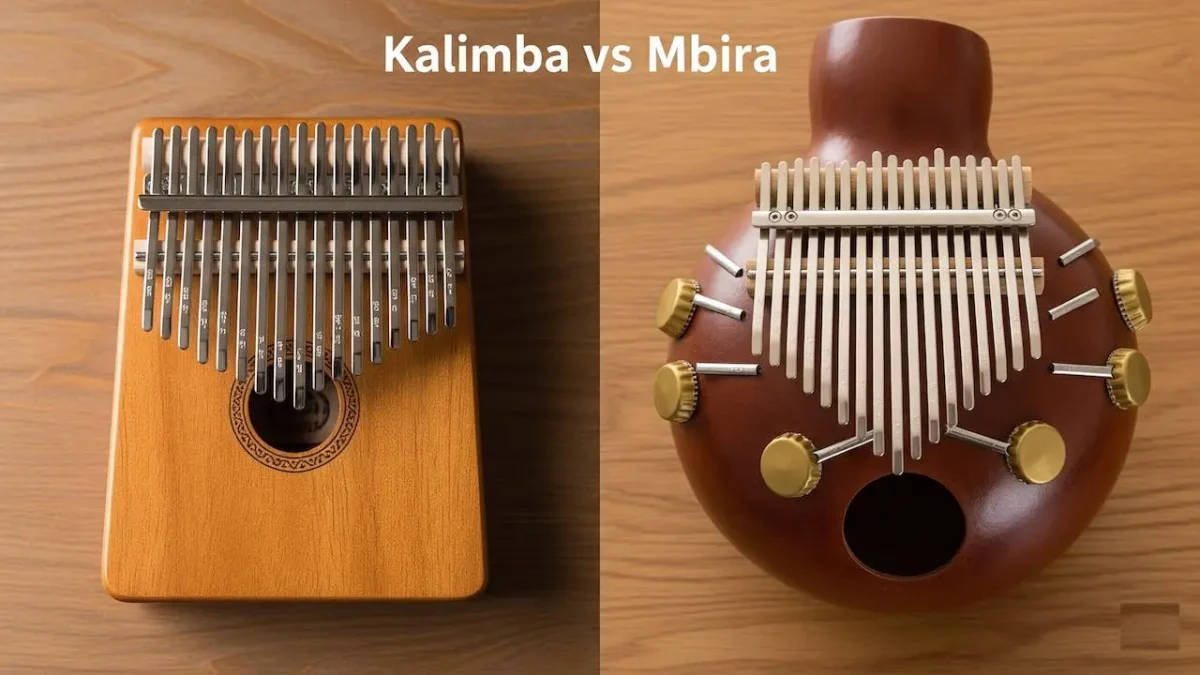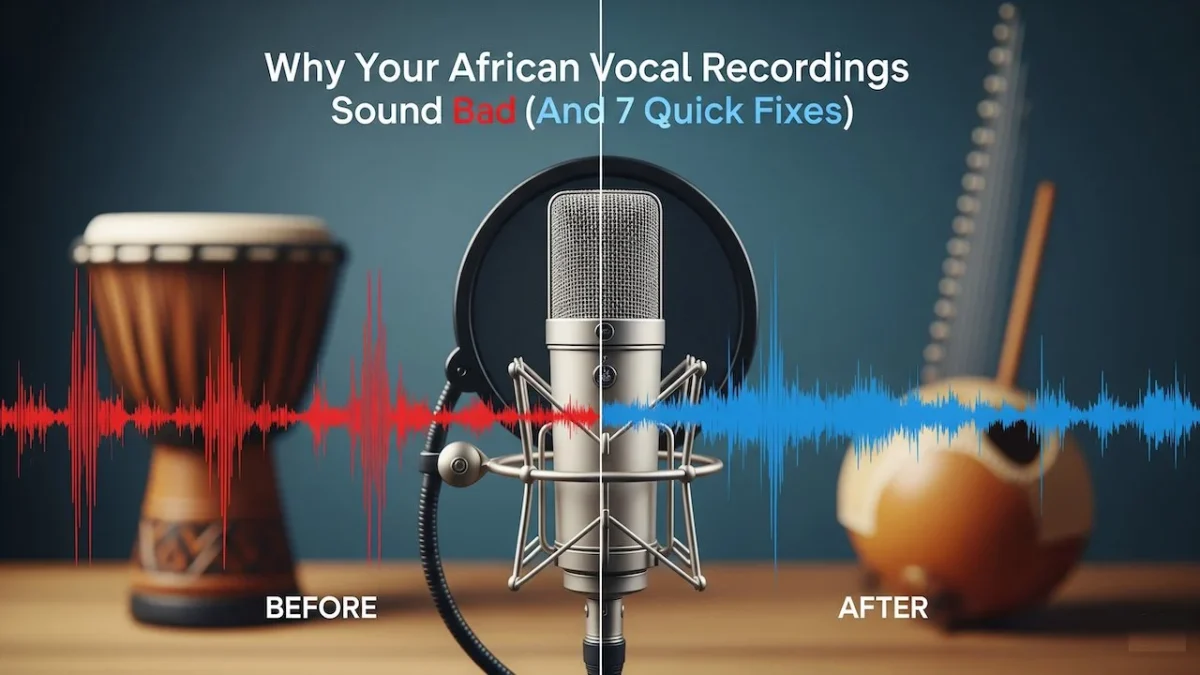
Microphones for Recording Traditional African Instruments: Condenser vs Dynamic Comparison
Dynamic microphones excel at recording loud traditional African percussion instruments like djembes and talking drums due to their high SPL handling and durability, while condenser microphones capture subtle details in string instruments like kora and mbira with superior sensitivity and frequency response.
Recording traditional African instruments requires understanding how microphone technology interacts with unique acoustic properties. Each instrument type demands specific microphone characteristics based on volume levels, frequency ranges, and playing techniques that have been refined over centuries.
Dynamic Microphones for Traditional African Instruments
Dynamic microphones handle high sound pressure levels without distortion, making them perfect for loud percussion instruments common in African music. These microphones can withstand a much louder signal, or more sound pressure level (SPL) than a condenser microphone can which is much more sensitive by comparison.
Dynamic microphones are built to withstand rough handling and are less susceptible to damage, making them ideal for live performances. This durability proves valuable when recording in outdoor settings or during energetic ensemble performances.
Best Dynamic Microphones for African Percussion
The Shure SM57 stands out as the industry standard for percussion recording. SM57s work well on bongos and djembe. If you want a big African sound on the djembe, small rooms are not good. Get a bit of space between the mic and the drum.
For djembe recording specifically, the Shure Beta 52A (kick drum mic) at the bottom of the djembe captures the deep resonance from the sound port while maintaining clarity in the low frequencies.
Dynamic Microphone Advantages
Unlike condenser mics, dynamic mics do not require phantom power, allowing for more straightforward setup and usage. This simplicity benefits field recording situations where power sources may be limited or unreliable.
Dynamic microphones are extremely durable and aren’t terribly sensitive to things like humidity, heat, and electric shock. These characteristics suit African recording environments where temperature and humidity fluctuations are common.
| Instrument Type | Recommended Dynamic Mic | Position | Distance |
|---|---|---|---|
| Djembe | Shure SM57 | 45-degree angle | 6-12 inches |
| Talking Drum | Shure Beta 57A | Off-axis | 4-8 inches |
| Dundun | Shure Beta 52A | Sound port | 2-6 inches |
| Bongo | Shure SM57 | Center edge | 3-6 inches |
Condenser Microphones for Traditional African Instruments
Condenser microphones provide superior sensitivity and frequency response, capturing nuanced details in melodic instruments like kora, mbira, and traditional flutes. Unlike dynamic microphones, which use a magnetic coil to produce electricity, condenser mics rely on an electrically charged diaphragm to generate an electrical current. This makes them more sensitive than their dynamic counterparts and capable of capturing subtle details in both highs and lows.
The increased sensitivity makes condenser microphones ideal for instruments with complex harmonic content and subtle tonal variations that define traditional African music.
Small Diaphragm Condensers for African Strings
When tackling the top of the drum, I’d usually start around 12 inches from the drum skin, using a small-diaphragm, cardioid capacitor microphone. This technique applies equally well to string instruments like kora and ngoni.
Small diaphragm condensers capture the full frequency spectrum of plucked string instruments without coloration. The precise transient response reveals the attack characteristics that distinguish one playing style from another.
Large Diaphragm Condensers for Vocals and Wind Instruments
Traditional African vocals often feature complex melismatic passages and call-and-response patterns. Large diaphragm condensers provide the warmth and presence needed to capture these vocal techniques naturally.
For wind instruments like traditional flutes and horns, large diaphragm condensers placed at moderate distances capture both the direct sound and subtle room reflections that contribute to authentic acoustic character.
| Instrument Category | Condenser Type | Polar Pattern | Phantom Power |
|---|---|---|---|
| String Instruments | Small Diaphragm | Cardioid | 48V Required |
| Wind Instruments | Large Diaphragm | Cardioid | 48V Required |
| Vocal Traditions | Large Diaphragm | Cardioid | 48V Required |
| Ambient Recording | Small Diaphragm | Omnidirectional | 48V Required |
Frequency Response Considerations
Traditional African instruments span a wide frequency range that requires careful microphone selection based on each instrument’s fundamental and harmonic characteristics.
Low Frequency Response (20-200 Hz)
Bass drums like dundun and large djembes produce fundamental frequencies as low as 40-80 Hz. Dynamic microphones typically handle these frequencies better due to their robust construction and ability to manage high sound pressures without distortion.
Condenser microphones can capture these low frequencies with greater detail but may distort when exposed to excessive sound pressure levels from close-miked large percussion instruments.
Midrange Clarity (200-2000 Hz)
This range contains the fundamental frequencies of most melodic instruments including kora (fundamental around 220-880 Hz), mbira (200-1000 Hz), and traditional vocal ranges (100-1000 Hz for male voices, 200-2000 Hz for female voices).
Both microphone types handle midrange frequencies well, but condensers provide more detailed harmonic information that reveals the subtle differences between playing techniques and instrument construction variations.
High Frequency Detail (2000-20000 Hz)
Harmonics and overtones that give each instrument its distinctive character exist primarily in this range. Metal instruments like bells and shakers rely heavily on high-frequency content for their perceived brightness and clarity.
Condenser microphones excel in this range with extended frequency response that captures subtle harmonic details often missed by dynamic microphones.
Sound Pressure Level Handling
Understanding maximum SPL capabilities prevents distortion and microphone damage during recording sessions with dynamic percussion ensembles. Instruments which are inherently louder, like a snare drum, most brass instruments require microphones capable of handling high sound pressure levels.
Traditional African percussion ensembles can generate sound levels exceeding 130 dB SPL when multiple drums play simultaneously. Dynamic microphones typically handle 140+ dB SPL, while most condenser microphones max out around 120-130 dB SPL.
Dynamic Microphone SPL Advantages
Professional dynamic microphones like the Shure SM57 can handle up to 140 dB SPL, making them suitable for close-miking even the loudest traditional percussion instruments. This capability allows engineers to place microphones closer to sound sources for better isolation and control.
The reduced sensitivity of dynamic microphones also helps reject background noise and room reflections, which proves valuable when recording in less-than-ideal acoustic environments.
Condenser Microphone Limitations
While microphones can be used interchangeably, condenser microphones are generally more sensitive to signal, so although you can’t blow out the capsule, you can get a lot of distortion if your signal is too hot.
This sensitivity requires careful gain staging and microphone placement when recording loud percussion instruments. Using pad switches or maintaining greater distances helps prevent overload distortion.
Environmental Durability Factors
African recording environments present unique challenges including temperature extremes, humidity variations, and dust exposure that affect microphone performance and longevity.
A dynamic mic captures less detail than a condenser, which can be a good thing because that makes them more forgiving in noisy situations. This characteristic benefits field recording situations where complete acoustic control is impossible.
Humidity and Temperature Resistance
Dynamic microphones use simpler construction with fewer sensitive components, making them more resistant to humidity and temperature fluctuations. The magnetic coil and diaphragm assembly tolerates moisture better than condenser capsules.
Condenser microphones contain sensitive electronic components and thin diaphragms that can be damaged by excessive humidity or rapid temperature changes. Climate-controlled storage becomes necessary in tropical environments.
Physical Durability
The robust construction of dynamic microphones allows them to withstand the physical demands of traditional music performances, including energetic playing styles and potential accidental impacts.
Condenser microphones require more careful handling due to their delicate capsule construction and internal electronics. This sensitivity makes them less suitable for casual handling during informal recording sessions.
Power Requirements and Setup Complexity
Power requirements significantly impact recording workflow complexity and equipment needs for traditional African instrument sessions.
Unlike condenser mics, dynamic mics do not require phantom power, allowing for more straightforward setup and usage. This simplicity eliminates one potential failure point in remote recording situations.
Dynamic Microphone Setup Benefits
Dynamic microphones connect directly to any audio interface or mixer without additional power requirements. This plug-and-play capability speeds setup time and reduces the chance of technical problems during recording sessions.
Battery-powered recording devices can operate longer when using dynamic microphones since they don’t need to supply phantom power. This extends recording time for field sessions and mobile documentation projects.
Condenser Microphone Power Needs
Condenser microphones require 48V phantom power to operate their internal electronics. This requirement limits compatible recording equipment and increases power consumption from battery-operated devices.
Some condenser microphones include internal batteries as backup power sources, but these add weight and require regular maintenance to ensure reliable operation during important recording sessions.
Specific Instrument Recording Techniques
Each traditional African instrument benefits from tailored microphone selection and placement techniques developed through years of professional recording experience.
Djembe Recording Methods
Using a condenser I get a lot more bass and detail than with a dynamic, so if your budget can’t afford two mics, I’d go with a small diaphragm condenser. This advice applies when recording djembe as a solo instrument where every nuance matters.
For ensemble situations, Since djembes produce sounds on two sides – bottom sound hole and skin, there is always a question “should I use one, or two mics when micing it for live performance or studio session? The simplest answer would be “2 mics are better”.
The dual-microphone approach typically uses a dynamic microphone on the playing surface and either a dynamic or condenser microphone at the sound port, depending on the desired tonal balance and available equipment.
Kora Recording Strategies
The kora’s complex harmonic structure and wide dynamic range benefit from condenser microphone sensitivity. Small diaphragm condensers positioned 12-18 inches from the instrument capture both direct sound and sympathetic string resonance.
Multiple microphone positions can capture different aspects of kora performance: one microphone focused on the strings for attack and clarity, another positioned to capture the calabash resonance for warmth and depth.
Understanding how to play the kora helps engineers position microphones optimally to capture the full range of playing techniques and tonal possibilities.
Talking Drum Techniques
Talking drums require microphones capable of capturing both the fundamental pitch and the pitch-bending techniques that create their “talking” characteristic. Dynamic microphones positioned off-axis reduce proximity effect while maintaining clear transient response.
The variable pitch nature of talking drums can challenge microphone placement since the frequency content changes dramatically during performance. Dynamic microphones provide more consistent response across the instrument’s pitch range.
Multi-Microphone Recording Approaches
Complex traditional African music arrangements often benefit from multiple microphone techniques that combine dynamic and condenser microphones strategically.
I normally use condensers only for room/ambient purposes when recording percussion drums. I normally close mike the drums with dynamic microphones for direct sound capture.
Close Miking with Dynamics
Dynamic microphones excel at close-miking individual instruments within ensemble arrangements. Their directional characteristics and reduced sensitivity help isolate specific instruments while minimizing bleed from other ensemble members.
Close-miked dynamic signals provide the attack and presence needed to cut through dense arrangements while maintaining natural tonal character.
Ambient Recording with Condensers
Condenser microphones placed as room microphones capture the natural acoustics and ensemble interaction that define traditional African music performances. These ambient microphones preserve the spatial relationships between instruments and performers.
The combination of close dynamic microphones and distant condenser room microphones provides mixing flexibility while maintaining authentic acoustic character.
Stereo Recording Techniques
Matched pairs of small diaphragm condenser microphones work well for stereo recording of traditional ensembles. Popular techniques include ORTF, XY, and spaced pair configurations depending on the ensemble size and acoustic environment.
Stereo recording captures the natural left-right positioning of instruments and preserves the spatial aspects of traditional performance practices.
Learn more about traditional African instruments and their unique acoustic properties to better understand microphone selection criteria.
People Also Ask
Dynamic microphones like the Shure SM57 work best for djembe recording due to their high SPL handling and ability to capture the drum’s powerful transients without distortion. SM57s work well on bongos and djembe, and professional engineers consistently choose them for close-miking percussion instruments in both studio and live situations.
Most condenser microphones cannot handle the high sound pressure levels produced by traditional African percussion instruments when close-miked. Condenser microphones are generally more sensitive to signal, so you can get a lot of distortion if your signal is too hot. Use condensers at greater distances or for ambient recording instead.
Small diaphragm condenser microphones positioned 12-18 inches from the kora provide the best balance of detail and natural tone. Using a small-diaphragm, cardioid capacitor microphone captures the instrument’s complex harmonic structure while maintaining clear string definition and calabash resonance.
You only need phantom power if using condenser microphones; dynamic microphones work without external power. Unlike condenser mics, dynamic mics do not require phantom power, allowing for more straightforward setup and usage. This makes dynamics ideal for field recording and battery-powered recording situations.
Sound quality depends on the specific instrument and recording context rather than microphone type alone. Condenser mics are more sensitive and capable of capturing subtle details in both highs and lows, making them better for melodic instruments, while dynamics excel at handling loud percussion without distortion.
Recording Environment Considerations
African recording environments range from professional studios to outdoor village settings, each requiring different microphone approaches based on acoustic conditions and practical limitations.
Studio Recording Advantages
Controlled studio environments allow engineers to use either microphone type effectively. Sound treatment eliminates unwanted reflections, consistent power supplies support condenser microphones, and multiple microphone positions can be explored without environmental constraints.
Studio recordings benefit from the detailed frequency response of condenser microphones when recording solo instruments or small ensembles where every nuance contributes to the final artistic statement.
Field Recording Challenges
Field recording situations favor dynamic microphones due to their durability and independence from phantom power. Wind, dust, and temperature variations can damage sensitive condenser capsules or cause handling noise that interferes with recording quality.
Battery life becomes critical during extended field recording sessions. Dynamic microphones allow longer recording times since audio interfaces don’t need to supply phantom power to multiple microphones simultaneously.
Live Performance Requirements
Live performance situations with traditional African instruments almost always require dynamic microphones due to high sound pressure levels, feedback rejection needs, and the physical demands of energetic performances.
The reduced sensitivity of dynamic microphones helps prevent feedback in live situations while still capturing the essential character of each instrument clearly enough for sound reinforcement purposes.
Explore rhythms of Afro music to understand the complex polyrhythmic patterns that influence microphone placement and recording techniques.
Budget Considerations and Value Analysis
Microphone selection often depends on budget constraints, with dynamic microphones generally providing better value for entry-level recording setups. Dynamic microphones can be substantially cheaper than condensers, and yet they can perform better for some applications such as capturing live performance.
Entry-Level Recommendations
Beginning recordists should prioritize dynamic microphones for their versatility and durability. A single high-quality dynamic microphone can handle most traditional African instruments adequately while learning proper recording techniques.
The Shure SM57 represents excellent value as a versatile dynamic microphone that performs well on both percussion and melodic instruments. Its widespread industry acceptance ensures compatibility with any recording setup.
Professional Setup Priorities
Professional recording setups benefit from having both microphone types available for different applications. Dynamic microphones handle close-miking duties while condensers capture ambient information and detailed solo performances.
Investing in matched pairs of small diaphragm condensers enables professional stereo recording techniques that preserve the spatial characteristics of traditional ensemble performances.
Long-Term Investment Considerations
Dynamic microphones typically provide longer service life due to their robust construction and simpler maintenance requirements. This longevity makes them better long-term investments for facilities that record traditional African instruments regularly.
Condenser microphones require more careful handling and periodic recalibration but provide superior sound quality that justifies their higher cost when recording conditions allow their optimal use.
FAQs
Large diaphragm condenser microphones work best for traditional African vocals due to their sensitivity to vocal nuances and natural warmth that complements the human voice. However, in noisy environments or for call-and-response sections with background instruments, dynamic microphones provide better isolation and feedback rejection.
Use dynamic microphones with effective windscreens and position microphones to minimize direct wind exposure. Dynamic microphones are extremely durable and aren’t terribly sensitive to things like humidity, heat, making them more suitable for outdoor recording conditions than sensitive condenser microphones.
Yes, a single condenser microphone positioned appropriately can capture a full ensemble, but the results won’t provide the isolation and mixing control available with multiple microphones. For documentary purposes, one microphone may suffice, but professional recordings benefit from individual instrument microphones combined with ambient microphones.
Position small diaphragm condenser microphones 8-12 inches from mbira instruments to capture both the metal tongues and gourd resonance clearly. This distance provides good balance between direct sound and natural ambience while avoiding excessive proximity effect or handling noise from the performer’s movements.
Use dynamic microphones positioned close to instruments to minimize room reflection pickup, and consider acoustic treatment like blankets or portable absorption panels. A dynamic mic captures less detail than a condenser, which can be a good thing because that makes them more forgiving in noisy situations.
Cardioid polar patterns provide the best balance of instrument pickup and background rejection for ensemble recording. Usually, dynamic microphones have a cardioid or supercardioid pattern, whereas condensers can have any pattern, giving condensers more flexibility for different recording scenarios.
Consider integrating your microphone techniques with proper audio interfaces for African music recording to maximize recording quality and workflow efficiency.



